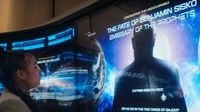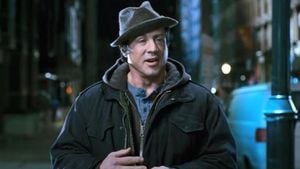Star Trek, a franchise that has boldly gone where no television series had gone before, continues to thrive nearly sixty years after its original debut. Its enduring popularity speaks volumes about its ability to adapt, reinvent, and sometimes even contradict itself, as recent developments across television, audio drama, and upcoming series highlight both the franchise’s flexibility and the passionate debates it stirs among fans.
On October 20, 2025, ComicBook.com published an in-depth look at seven major changes to Star Trek canon, tracing how the universe’s internal history has been retconned and reimagined over the decades. These changes, ranging from timelines and character backstories to the very appearance of iconic alien species, have sparked both excitement and consternation among the show’s dedicated fanbase.
One of the most significant changes concerns the infamous Eugenics War. In early Star Trek lore, this pivotal conflict was set in the then-distant 1990s. But as the real 1990s came and went without any genetically engineered supermen taking over the world, the timeline became anachronistic. To resolve this, starting with Star Trek: Enterprise, the franchise shifted the Eugenics War to the late 21st century, preserving the storyline’s intent while sidestepping historical inconsistency. As ComicBook.com noted, this move kept the core backstory intact and protected the series from being trapped by its own predictions.
Another retcon that stunned fans was the revelation in Deep Space 9 that Dr. Julian Bashir, previously portrayed as merely socially awkward, was actually genetically modified. This twist didn’t just reshape Bashir’s character; it rippled through the entire Eugenics War narrative. Instead of focusing solely on the dangers of racial or genetic superiority, the story now grappled with the ethics of using technology to alter human DNA. The shift, as highlighted in ComicBook.com’s article, changed the moral message at the heart of the franchise’s cautionary tale.
Canon changes haven’t been limited to timeline tweaks and character backstories. The physical appearance of the Klingons—a Star Trek hallmark—has also evolved dramatically. Originally depicted as nearly human in The Original Series, Klingons gained their now-famous forehead ridges in later incarnations. Fans were left scratching their heads until the franchise, with a wink and a nudge, explained the difference as the result of a genetic virus. This in-universe explanation, as ComicBook.com observed, turned a potential continuity error into a running joke and a symbol of the franchise’s willingness to embrace its own quirks.
Character arcs have also undergone significant revision. Captain Christopher Pike, introduced as a tragic figure confined to a wheelchair in "The Menagerie," was reimagined in Star Trek: Discovery. The newer series revealed that Pike had advanced knowledge of his impending injuries, transforming him from a victim of fate into a hero who embraced his destiny. This change, as discussed by ComicBook.com, recasts Pike as a more active and honorable figure within the Starfleet pantheon.
Even the personal lives of Star Trek’s characters have not been immune to revision. Strange New Worlds depicted Pike in a relationship with Captain Maria Batel, a marked departure from his earlier, more sexist attitudes in The Original Series. In the 1960s, Pike’s discomfort with women on the bridge reflected contemporary social norms, but later series have worked to undo this aspect of his character, showcasing growth and a more progressive worldview. ComicBook.com lauded this development as an example of the franchise’s ability to evolve alongside society.
Meanwhile, the fate of Benjamin Sisko, one of Star Trek’s most enigmatic figures, remains a tantalizing mystery. In the Deep Space Nine finale "What You Leave Behind," Sisko seemingly sacrifices himself in the Fire Caves of Bajor, only to awaken in the Celestial Temple as the Prophets’ emissary. He promises his wife, Kasidy, that he will return someday—a promise that has gone unfulfilled on screen for decades.
On October 20, 2025, Gizmodo reported that the upcoming series Star Trek: Starfleet Academy, set to premiere January 15, 2026, will feature a class at the 32nd-century Starfleet Academy dedicated to unraveling the mystery of Sisko’s fate. The series’ executive producer, Noga Landau, hinted that the show might do more than just reference Sisko, telling Screenrant, “There’s also mysteries. Watch out for Benjamin Sisko! We get to do some really cool stuff that hasn’t been done in a long time, that I think really honors the fans who’ve been waiting to see what happens.”
This tantalizing possibility has set the fandom abuzz. Could the show finally address Sisko’s long-promised return? Will the mystery of his fate in the Celestial Temple be solved? And, perhaps most intriguingly, could Avery Brooks, who has long retired from acting, be convinced to reprise his iconic role?
In addition to its narrative ambitions, Starfleet Academy is set to honor the franchise’s legacy with appearances by beloved characters, including Robert Picardo’s Doctor from Voyager and cast members from Discovery. As Landau explained, the series aims to connect with Star Trek’s rich history while charting new territory in the far future.
Star Trek’s willingness to revisit and revise its own history isn’t limited to television. On the audio front, TrekMovie.com reviewed the seventh episode of Star Trek: Khan, an audio drama that delves into the psyche of one of the franchise’s most infamous villains. The episode, released October 20, 2025, finds Khan wrestling with betrayal by his right-hand man Ivan and the devastating loss of Marla McGivers, his beloved wife. The story, set against the backdrop of Ceti Alpha V, explores themes of leadership, consensus, and grief, humanizing Khan in ways previously unimagined. The framing story, set in 2296, introduces Dr. Rosalind Lear, whose investigation into Khan’s legacy may reveal her to be the grown-up child of Khan and Marla—a theory that has fans eagerly awaiting the final episodes.
Through all these changes, Star Trek remains a living, breathing universe. Its willingness to rethink established canon, embrace new perspectives, and revisit unresolved mysteries is both a source of frustration and joy for its audience. As new series and stories continue to push boundaries, one thing is clear: Star Trek’s journey is far from over, and its future is as unpredictable—and as thrilling—as ever.
With new stories on the horizon and old mysteries poised for fresh exploration, Star Trek continues to invite fans to boldly go along for the ride.





